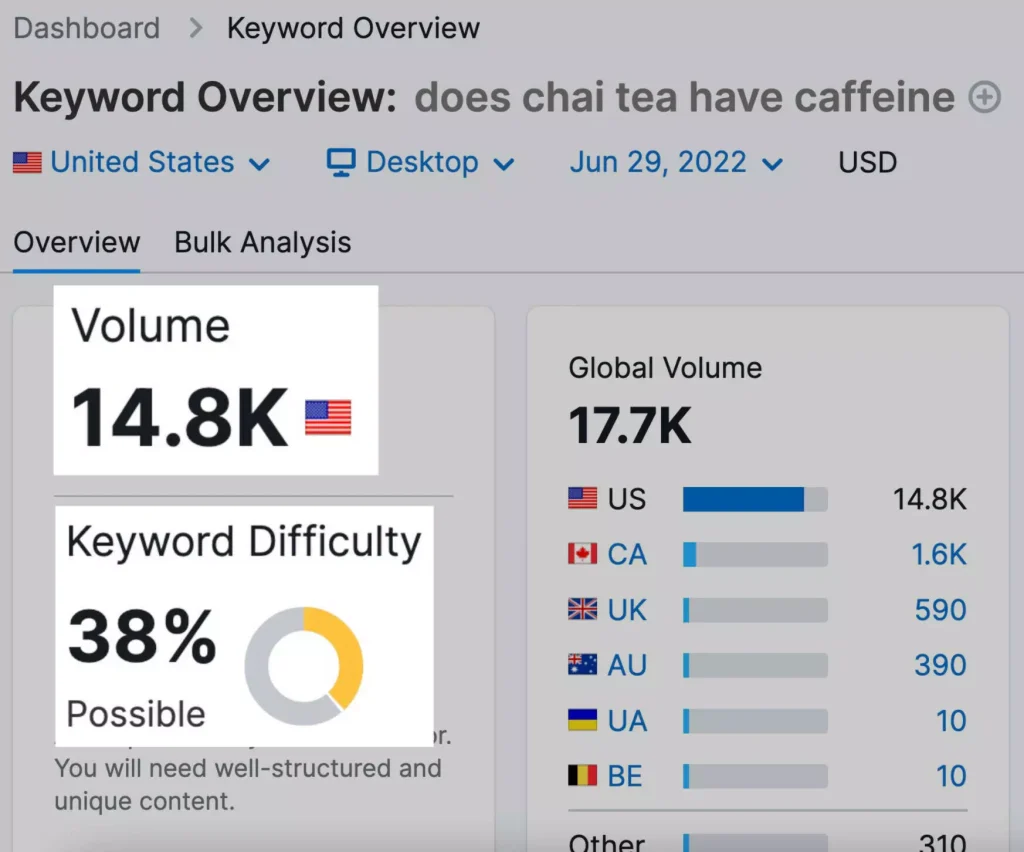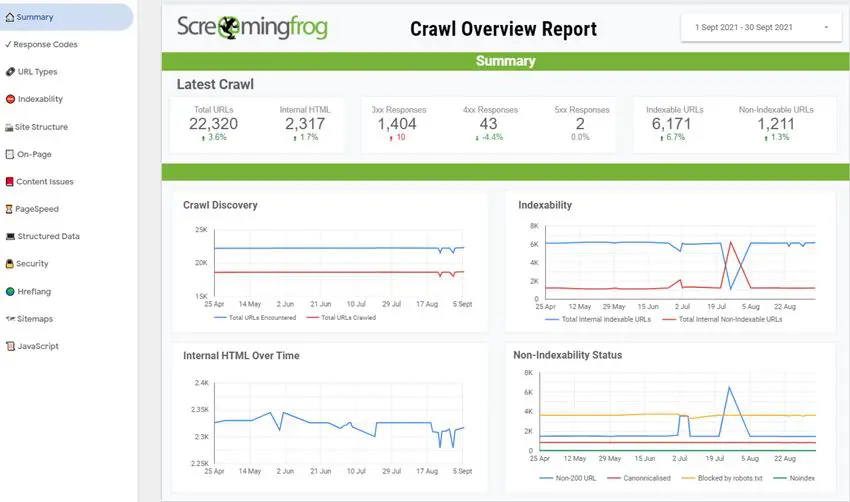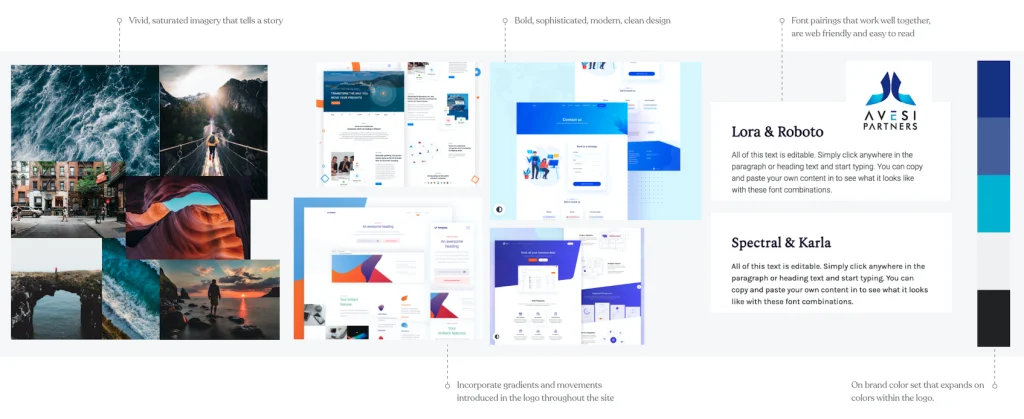In this post, we share our comprehensive guide to performing a WordPress SEO audit, from setting clear goals, identifying high-potential keywords, optimizing content, and ensuring an efficient site structure to monitoring and tracking progress.
The success of your WordPress website hinges on its visibility to the right audience. Search Engine Optimization (SEO) is the key to unlocking this visibility, ensuring that your content reaches those who seek it. WordPress, with its user-friendly platform, empowers countless website owners to create and share their content, but without effective SEO, even the most compelling material can remain buried in obscurity.
That’s where WordPress SEO audits comes in. In this blog post, we’ll delve into the essential practice of auditing your WordPress website’s SEO. We’ll explore how you can assess and optimize your site’s on-page elements, technical performance, and off-page factors to boost your search engine rankings. Whether you’re a seasoned marketer or just getting started, this guide will equip you with the knowledge and tools to enhance your WordPress website’s SEO and, in turn, your online success.

Preparing for a WordPress SEO Audit
- Create clear goals and objectives
- Set up the necessary tools and resources
- Understand and define your target audience
Before diving into WordPress SEO audits, it’s essential to lay a strong foundation by thoroughly preparing for the process. To begin, you must set clear goals and objectives. Define what you aim to achieve with your SEO audit, whether it’s improving your website’s search engine rankings, boosting organic traffic, or enhancing user engagement. With well-defined objectives, you’ll have a roadmap for the audit, making it easier to track your progress and measure success.
Equally important is gathering the necessary tools and resources. A WordPress SEO audit can be an intricate task, and having the right tools at your disposal can make all the difference. This includes SEO analytics platforms, keyword research tools, SEO plugins for your WordPress site, and site auditing software. These tools will provide valuable insights and help streamline the audit process.
Understanding your target audience is a fundamental step in the preparation phase. By gaining insight into your audience’s preferences, behaviors, and pain points, you can tailor your SEO strategies to resonate with them more effectively. Research your audience’s demographics, interests, and online habits to craft content and optimization strategies that will connect with them on a deeper level. With clear goals, the right tools, and a deep understanding of your audience, you’re well-equipped to embark on your WordPress SEO audit and set the stage for a more successful online presence.
On-Page SEO Analysis
- Have you conducted keyword research for your business? Are you using high volume terms that your competitors are ranking for?
- Is your content optimized with the relevant keywords, using headers, and keyword-rich titles?
- Are all of the images on your website optimized and include alt tags?
- Does the URL structure of each page and blog post feel SEO & user friendly?
Keyword Research and Analysis
SEO keyword research and analysis are imperative to the success of your WordPress SEO audit. It’s a process that involves delving into the words and phrases your target audience uses when searching for content online. To kickstart this crucial step, you’ll need the right tools for keyword research. Platforms like Google Keyword Planner, SEMrush, Ahrefs, and Moz Keyword Explorer offer valuable insights into keyword search volume, competition, and related terms, aiding in the identification of high-potential keywords.
These are the terms that strike a balance between being relevant to your content and having a reasonable search volume, enabling your website to rank higher in search engine results and attract the right audience. Identifying and strategically integrating these high-potential keywords into your content can significantly enhance your website’s discoverability, driving organic traffic and improving your overall SEO performance.

Image from semrush.com
Content Optimization
SEO content optimization is a multifaceted process that plays a pivotal role in elevating your WordPress website’s visibility in search engine results. One key aspect of this process is optimizing page titles and meta descriptions. Crafting compelling and keyword-rich titles and descriptions not only grabs users’ attention but also helps Google understand the content’s relevance.
Analyzing and improving content quality holds equal significance, given that search algorithms prioritize well-crafted, informative, and captivating content. Utilizing proper header tags, such as H1, H2, and H3, enhances content structure and readability, making it easier for both users and search engines to navigate.
Before writing a blog post or creating a new page on your website, choose one specific keyphrase around which your content will revolve. If possible, choose a keyphrase with a substantial search volume, ideally exceeding a minimum of 50 monthly search queries. It should also directly pertain to your business, products, or services, aligning your content with the interests and needs of your target audience.
Pro tips for writing a blog post or content page with SEO:
- Utilize platforms that aid in your writing, such as Surfer SEO
- Distribute your keyphrase throughout your entire post
- Place the keyphrase in your SEO title and H1
- Add the keyphrase to the meta description
- Use the keyphrase in the introduction sentence – We like to write a sentence at the top of the post about what we will cover in order to use the keyphrase in a more natural way. (Ex. “In this blog post, we share…”)
Additionally, effective internal and external linking strategies are essential. Internal links aid in guiding visitors to other valuable pages on your website, while external links to authoritative sources can boost your content’s credibility and SEO ranking. When combined, these strategies form a powerful toolkit for enhancing your website’s SEO performance and delivering a better experience to your audience.
Image & Media Optimization
Image and media optimization is a fundamental aspect of enhancing the overall SEO performance of your WordPress site. First and foremost, compressing images is a crucial step to ensure that your web pages load swiftly and efficiently. Large image files can slow down your website’s loading speed, which can negatively impact user experience and SEO rankings.
We use ImageOptim to compress images before uploading them to our website. This software allows you to compress your images without damaging the quality of the image. We also aim to have any picture we upload to be between 10-500 kb. If you are uploading an image of 1 mb or higher, it will significantly slow down your page load speed. Slow loading website = high bounce rate
Using descriptive alt tags for your images is vital. Alt tags serve as text descriptions for images, and they are not only essential for accessibility but also for search engine optimization. These tags provide search engines with valuable context about your images, allowing them to be appropriately indexed and improving your website’s chances of ranking well in image search results.
By incorporating image and media optimization strategies, you can enhance the performance and accessibility of your WordPress site while simultaneously boosting your SEO efforts.

Image from imageoptim.com
URL Structure
An efficient URL structure is integral to WordPress SEO, as it impacts both user experience and search engine optimization. Creating SEO-friendly permalinks is a significant part of this. By designing clean, descriptive URLs that incorporate relevant keywords, you make it easier for both users and Google to understand the content of your web pages.
These user-friendly links not only enhance click-through rates but also contribute to higher search rankings. Removing unnecessary parameters from your URLs is equally important. Parameters, often seen as a string of characters or numbers in a URL, can be confusing and are typically ignored by search engines.
By streamlining your URLs and eliminating these extraneous elements, you create a more concise, user-friendly, and SEO-efficient structure that helps improve the overall performance of your WordPress site.
Technical SEO Analysis
- How does your website speed and performance rank compared to your competitors?
- Is your website mobile friendly?
- Have you uploaded an XML Sitemap? Have you configured the robots.txt file to help search engines learn which pages to crawl and index and which to avoid?

Website Speed and Performance
Website speed and performance are inextricably linked to technical SEO, playing a pivotal role in determining a website’s search engine rankings and overall user experience. Checking page load times is a critical aspect of this relationship. Slow-loading web pages can deter visitors, increasing bounce rates and negatively affecting SEO rankings. Search engines, like Google, consider page speed as a ranking factor, making it vital to ensure that your site loads quickly and efficiently.
Caching and content delivery networks (CDNs) are essential tools in this regard. Caching involves storing copies of frequently accessed web content, reducing the time it takes to load pages. Content delivery networks, on the other hand, distribute your website’s data across multiple servers globally, enabling users to access your site from a server location closest to them. These technologies not only accelerate page load times but also enhance user experience, resulting in higher search engine rankings and increased user engagement – both crucial components of effective technical SEO.
Mobile Optimization
Mobile optimization is a critical component of technical SEO, especially in an era where a significant portion of web traffic originates from mobile devices. Ensuring a responsive design, which adapts seamlessly to various screen sizes and orientations, is paramount.
Responsive design not only enhances user experience but is also favored by search engines like Google, as it simplifies content accessibility and improves mobile-friendliness. A mobile-friendly user experience is equally essential. This entails optimizing page layouts, navigation, and interactive elements for smaller screens and touch-based interactions, ensuring that mobile users can access and engage with your website effortlessly.
XML Sitemap and Robots.txt
XML sitemaps and the robots.txt file work hand-in-hand to ensure effective search engine crawling and indexing. Creating and submitting XML sitemaps is the first step. These sitemaps provide search engines with a structured list of all the pages on your website, enabling efficient and thorough indexing.
By regularly updating and submitting your XML sitemap, you ensure that search engines can discover and index your new content promptly. You can upload your XML directly to search engines like Google through their webmaster tools or search console. Simply login to your Google Search Console account. In the left-hand menu, under “Index,” click on “Sitemaps.” This will take you to the Sitemaps page where you can submit your XML sitemap.
Configuring robots.txt files is the next vital step. This file instructs search engine crawlers on which parts of your site to crawl and index, and which to avoid. Properly configuring the robots.txt file is crucial for excluding sensitive or irrelevant pages from search engine results and concentrating the crawler’s efforts on your most important content.

Site Architecture and Navigation
- Does your site architecture make sense for users?
- Is your navigation easy to use?
- Have you implemented breadcrumbs to help users navigate your site?
- Do you include internal and external links on each page of your website?
In the realm of WordPress SEO, site architecture and navigation play a significant role in determining how both users and search engines interact with your website. It begins with analyzing your site structure, where you evaluate the organization of your content and pages.
A well-structured site ensures that search engines can easily crawl and index your content, while users can navigate intuitively. Ensuring a logical and user-friendly menu is equally important. This not only enhances the user experience but also guides visitors to find the information they seek efficiently.
Breadcrumbs
Implementing breadcrumbs is like leaving a trail of digital breadcrumbs that help users navigate your website with ease. These intuitive navigational aids provide users with a clear path to understand where they are within your site’s hierarchy. This not only simplifies their journey through your content but also enhances their overall engagement. Breadcrumbs serve as a visual representation of the website’s structure, displaying the hierarchical relationship between different pages.
Internal and External Links
Improving internal and external links goes beyond simply keeping visitors engaged on your site; it’s a strategy that forms the backbone of a well-structured and SEO-optimized website. By strategically interconnecting related pieces of content, you not only guide users to explore more of your valuable information but also send a strong signal to search engines about the relationships between your web pages.
Off-Page SEO Analysis
- Have you analyzed your backlink profile to ensure you only have reputable sources backlinking to you?
- Are you active on social media with posting, sharing, and commenting?
Backlink Profile
Your backlink profile is a pivotal component of off-page SEO analysis, influencing the authority and credibility of your website in the eyes of search engines. The process begins with identifying and analyzing your backlinks, scrutinizing the quality and relevance of the websites linking to yours. High-quality, authoritative backlinks from reputable sources can boost your site’s ranking, whereas toxic or spammy backlinks can be detrimental.
It’s imperative to use Google’s disavow tool to remove/disqualify harmful backlinks, signaling to search engines that you want no association with them. This not only helps in maintaining a clean and trustworthy backlink profile but also safeguards your website from potential penalties.
Social Media Signals
Social media signals are a vital aspect of off-page SEO analysis as they reflect the digital footprint and social engagement of a website or brand. Monitoring and improving your social media presence plays a pivotal role in this process. The frequency, quality, and engagement level of your social media activity can impact your website’s credibility and online authority.
Search engines often consider social signals such as likes, shares, and comments as indicators of a site’s popularity and relevance. Therefore, a proactive approach to social media, including regular updates, audience interaction, and sharing valuable content, can bolster your website’s off-page SEO.
Monitoring and Tracking
- Do you have the necessary tools in place to monitor and track your SEO success?
- Are you tracking KPIs and other metrics to see how your traffic and conversion rates are growing?
The practice of monitoring and tracking provide valuable insights and feedback for website improvement. The first step in this process involves setting up tools like Google Analytics and Google Search Console. These platforms offer comprehensive data on user behavior, organic search traffic, and search performance.
Once these tools are in place, the next vital task is tracking relevant key performance indicators (KPIs) and metrics. These might include organic traffic, click-through rates, conversion rates, and bounce rates, among others. By continually monitoring and analyzing these metrics, you can gauge the effectiveness of your SEO strategies and identify areas for improvement.
Additionally, we recommend regularly auditing and updating your SEO strategies, as search engine algorithms evolve, and user behavior changes.

SEO Best Practices and Future Considerations
SEO best practices are not static; they evolve with the ever-changing digital landscape. Staying updated with the latest SEO trends is paramount to maintaining a competitive online presence.
User experience and Core Web Vitals have taken center stage, as Google increasingly considers page loading speed and overall site performance in its ranking algorithms. Focusing on improving these factors ensures that your website delivers a smoother, more accessible experience for users, which can positively impact SEO.
With the rise of voice search, optimizing your content for conversational queries and considering schema markup to provide structured data for search engines can give you a significant advantage. Staying ahead of these emerging trends and proactively incorporating them into your SEO strategy is crucial for long-term success and maintaining a strong online presence in the ever-evolving digital landscape.
Conclusion
In the dynamic world of digital marketing and WordPress SEO, a thorough SEO audit is crucial. It directly impacts your website’s visibility, success, and its ability to reach the right audience. Without a well-organized, SEO-friendly website, even the most engaging content can get lost in the vast online world.
This guide covers all the key aspects of a WordPress SEO audit, from goal setting to keyword research, content optimization, and site structure. We’ve delved into both on-page and technical SEO, emphasizing mobile-friendliness, clean URLs, XML sitemaps, and the significance of a healthy backlink profile and an active social media presence.
We’ve discussed evolving SEO practices, like user experience, Core Web Vitals, voice search, and schema markup. Armed with this knowledge, you’re well-prepared to start your WordPress SEO journey, adapt to changes, and ensure your website’s long-term success in the ever-changing digital landscape.
If you’re looking to enhance your B2B SaaS SEO and boost your sales, we’re here to assist you. Motion Tactic is a Website Design + Digital Marketing Agency that specializes in serving B2B Technology Companies. Our expertise lies in crafting websites designed to drive growth for your software or technology business. Get in touch with us today to schedule your consultation and take your online presence to the next level.
Additional Resources
SEO Tools We Love
Yoast SEO is a powerful WordPress plugin that simplifies the process of content optimization for search engines. It offers a range of tools and features that guide content creators in enhancing their on-page SEO. It’s one of the best free seo tools and serves as a checklist while you’re writing content.
With Yoast SEO, users can customize title tags and meta descriptions, analyze the usage of focus keywords, assess content readability, and receive recommendations for improving content structure, internal and external linking, image alt text, and more.
The WordPress SEO plugin also assists in generating XML sitemaps, setting canonical URLs to avoid duplicate content issues, and incorporating schema markup for richer search results. By providing real-time feedback and actionable suggestions, Yoast SEO empowers users to create search engine-friendly, user-engaging content, ultimately improving their website’s search rankings and visibility.
Surfer SEO is an advanced content optimization tool that uses data-driven analysis to enhance the search engine performance of web content. It works by conducting in-depth keyword research, analyzing top-ranking pages, and evaluating various on-page factors of websites ranking in search results for a specific keyword.
Surfer SEO then provides actionable recommendations for optimizing your content, suggesting improvements such as keyword placement, content length, structure, and semantic relevance. It also offers insights into backlink profiles, page speed, and other technical aspects.
By leveraging data-driven insights, Surfer SEO allows content creators to fine-tune their content to align more closely with top-ranking pages, thereby improving their chances of securing higher search engine rankings and increased website traffic.
SEMrush is a comprehensive and highly-regarded digital marketing tool that offers a wide range of features for competitive analysis, keyword research, SEO, PPC, content marketing, and more. It allows users to gain insights into their online presence and that of their competitors, identifying opportunities to improve their digital marketing strategies.
SEMrush provides valuable data, including keyword rankings, search volume, and trends, while also offering site audit capabilities, backlink analysis, and advertising research tools. With its user-friendly interface and robust features, SEMrush is an essential resource for businesses and digital marketers seeking to enhance their online visibility, drive organic traffic, compare their content to competitors websites, and make data-informed decisions to achieve better results in the digital landscape.
Screaming Frog is a powerful and versatile technical SEO tool that plays a crucial role in optimizing websites for search engines. This web crawling software meticulously examines a website’s technical aspects, such as URL structures, internal and external links, metadata, response codes, and more, offering a comprehensive analysis of the site’s health and performance.
It assists in identifying and rectifying issues like broken links, duplicate content, missing meta tags, and excessive redirects, which can negatively impact SEO. Additionally, Screaming Frog provides insights into website speed, server errors, and other technical factors that influence search engine rankings. By offering a clear and actionable overview of a site’s technical SEO, this tool empowers webmasters and SEO professionals to make informed decisions and improvements, ultimately enhancing a website’s overall search engine visibility and user experience.


